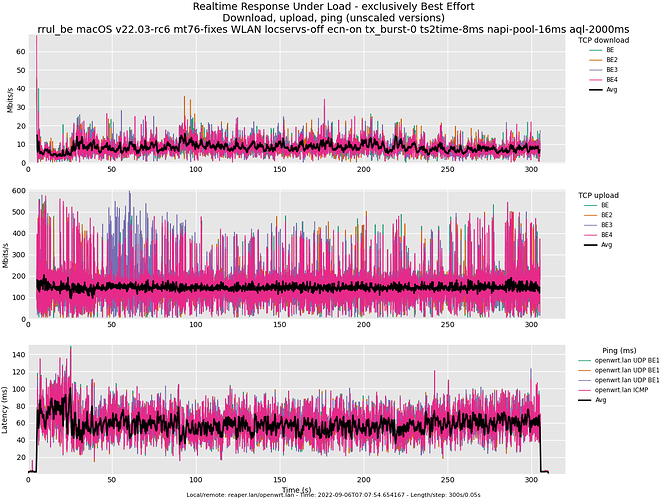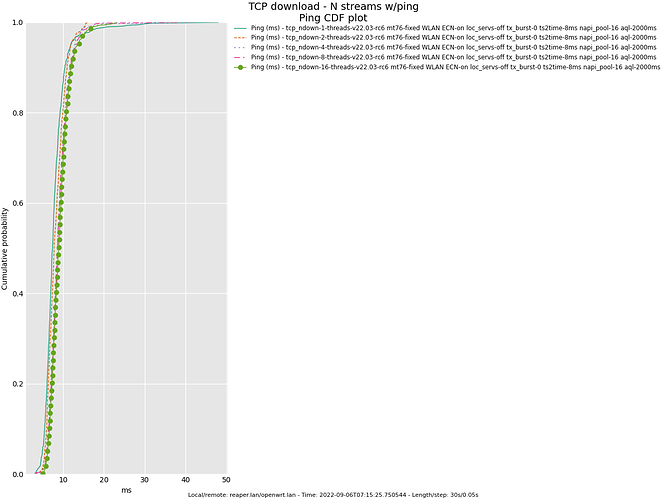I will patch this next. Test to come tomorrow, though, Dave.
Update: I changed my mind; I will fight against Gravity in the arvo. See below.
WMM test parameters:
tx_queue_data2_aifs=3
tx_queue_data2_cwmin=15
tx_queue_data2_cwmax=63
tx_queue_data2_burst=0
wmm_ac_be_txop_limit=0
AQL test parameters:
root@nanohd-downstairs:~# cat /sys/kernel/debug/ieee80211/phy1/aql_txq_limit
AC AQL limit low AQL limit high
VO 2000 2000
VI 2000 2000
BE 2000 2000
BK 2000 2000
root@nanohd-downstairs:~# cat /sys/kernel/debug/ieee80211/phy1/aql_threshold
24000
root@nanohd-downstairs:~# cat /sys/kernel/debug/ieee80211/phy1/aql_enable
1
Kernel patches:
MS2TIME(8)
NAPI_POLL_WEIGHT=16
flent rrul_be 300 s test graph:
flent tcpnup test with 1, 2, 4, 8 and 16 threads ping cdf (median ≈70 ms) graph:
flent tcpndown test with 1, 2, 4, 8 and 16 threads ping cdf (median ≈8 ms) graph:
Click me to download flent data and tcpdump capture.
Note that I didn't see any kernel warning; hence the driver is not calling netif_napi_add() with a weight value higher than the one defined (16).
if (weight > NAPI_POLL_WEIGHT)
netdev_err_once(dev, "%s() called with weight %d\n", __func__,
weight);


